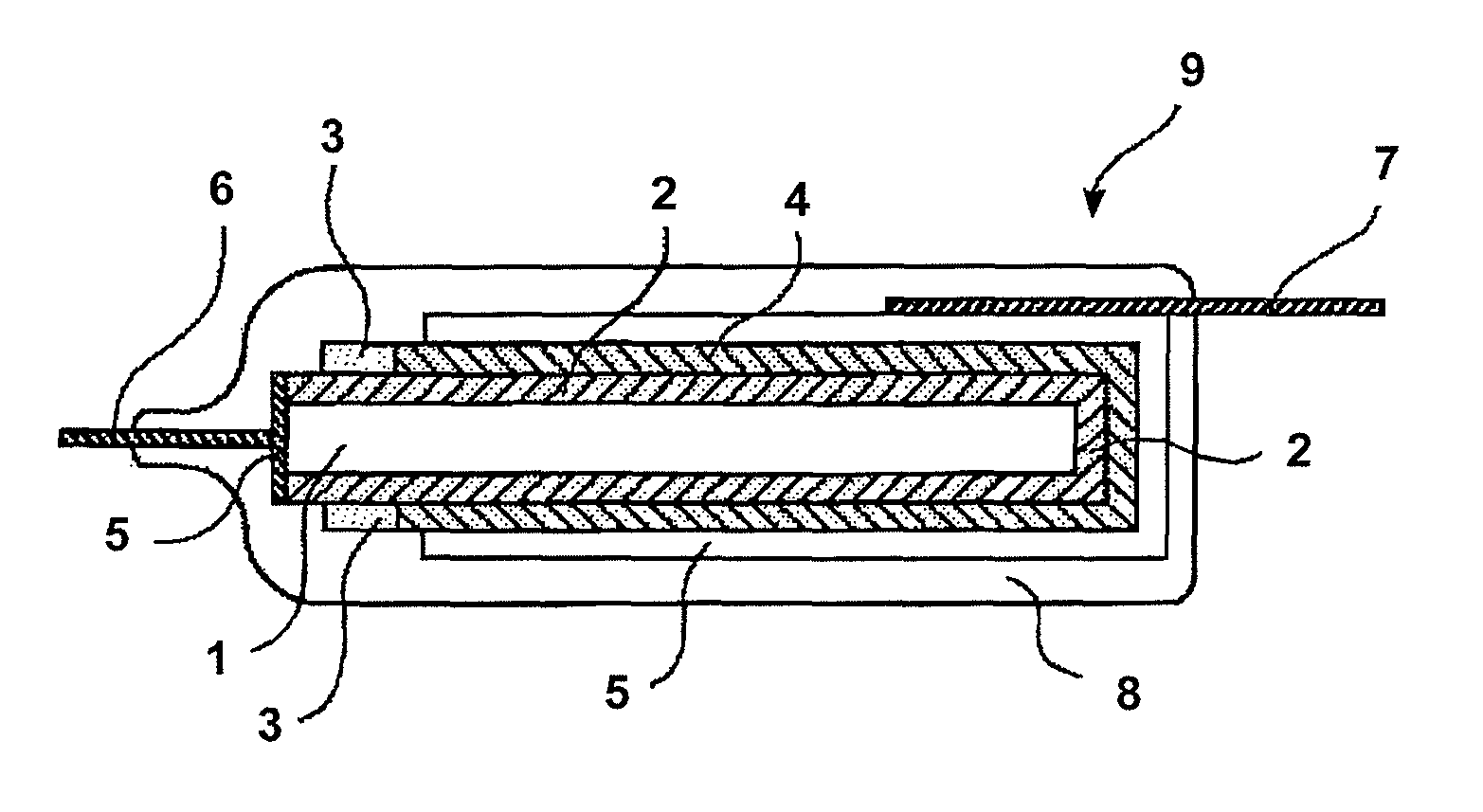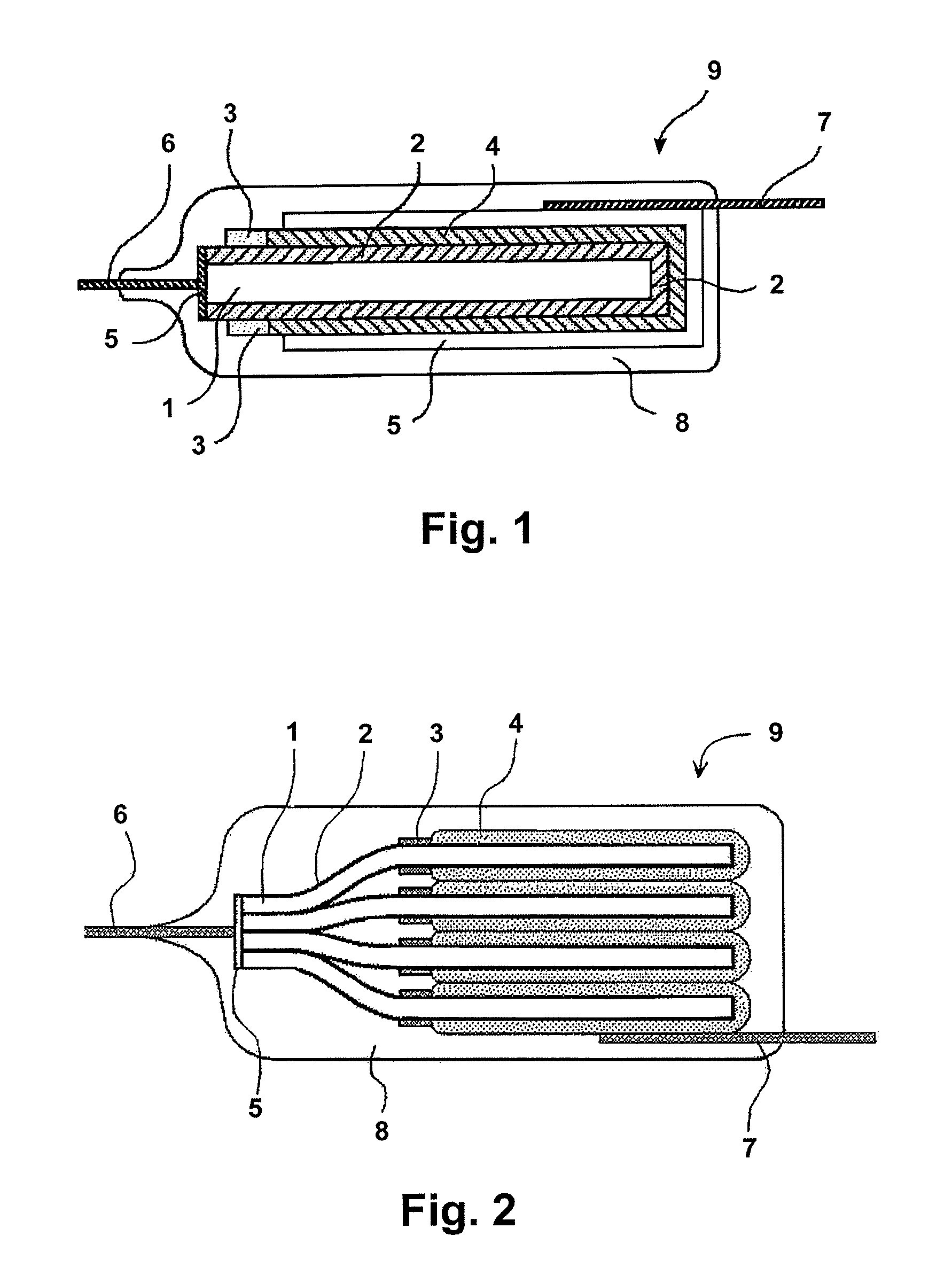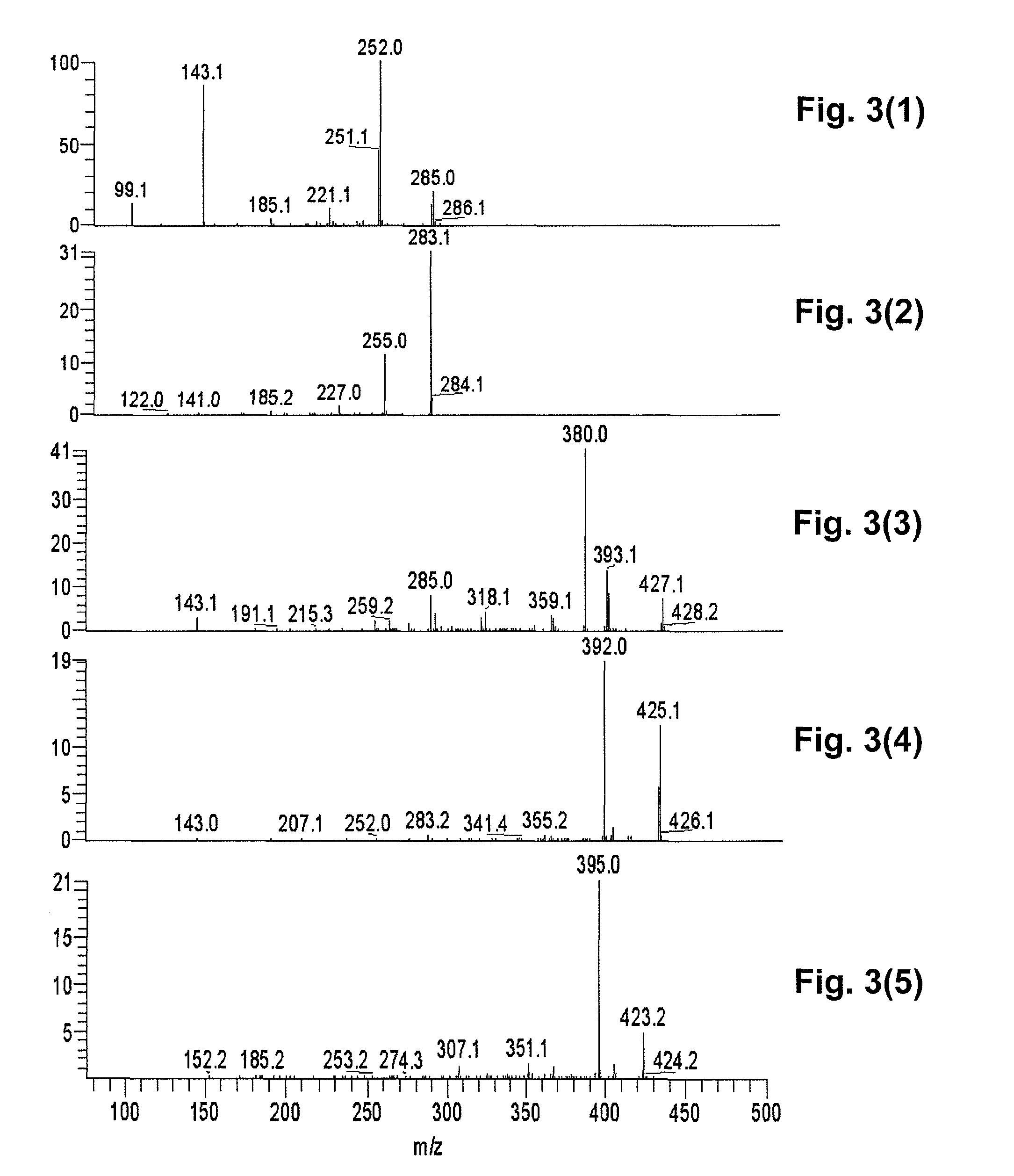Method for production of solid electrolyte and solid electrolytic capacitor
a solid electrolyte and capacitor technology, applied in the manufacture of electrolytic capacitors, electrolytic capacitors, coatings, etc., can solve the problems of large capacity of solid electrolyte capacitor chips, inability to obtain large capacity, and undesirable enhancement of equivalent series resistance, so as to avoid short-circuiting in capacitor elements, uniform shape and dimension, and stably manufactured
- Summary
- Abstract
- Description
- Claims
- Application Information
AI Technical Summary
Benefits of technology
Problems solved by technology
Method used
Image
Examples
example 1
[0150]A chemically formed aluminum foil with a thickness of 100 μm was cut into strips each with a width of 3 mm and a length of 10 mm. Each strip was coated with a polyimide solution so that a linear coating of the polyimide solution with a width of 1 mm was formed which belted the strip at a position 4 mm apart from one end thereof and 5 mm apart from the other end thereof (thus, each strip was divided into two parts, one of which had a 3 mm×4 mm size and the other had a 3 mm×5 mm). The linear polyimide coating was dried to form a linear masking belting each strip. One part having a 3 mm×4 mm size of each aluminum foil strip was subjected to chemical formation using an aqueous ammonium adipate solution with a concentration of 10% by mass while a voltage of 4V was applied, whereby a dielectric oxide layer was formed on the cut periphery of the part having a 3 mm×4 mm size.
[0151]Oxidative polymerization of 3,4-ethylenedioxythiophene was carried out to form a solid electrolyte film o...
example 2
[0159]The procedures as described in Example 1 were repeated to make aluminum foil strips each having a solid electrolyte layer formed thereon, wherein the polymerizable monomer-containing solution used was changed to a solution in isopropyl alcohol (IPA) containing 25% by mass of 3,4-ethylenedioxythiophene, 0.007% by mass, as expressed in terms of the concentration of 3,4-ethylenedioxythiophene monomer, of 3,4-ethylenedioxythiophene dimer, and 0.001% by mass, as expressed in terms of the concentration of 3,4-ethylenedioxythiophene monomer, of 3,4-ethylenedioxythiophene trimer. The value as defined by the formula “A / (B+C)” (where A: concentration of the monomer, B: concentration of the dimmer as expressed in terms of the concentration of the monomer, and C: concentration of the trimer as expressed in terms of the concentration of the monomer) was 3.125. Further, the cycle comprising the dipping step and polymerization step was repeated 17 times instead of 19 times to form a solid el...
example 3
[0163]The procedures as described in Example 1 were repeated to make aluminum foil strips each having a solid electrolyte layer formed thereon, wherein the polymerizable monomer-containing solution used was changed to a solution in isopropyl alcohol (IPA) containing 30% by mass of 3,4-ethylenedioxythiophene, 0.2% by mass, as expressed in terms of the concentration of 3,4-ethylenedioxythiophene monomer, of 3,4-ethylenedioxythiophene dimer, and 0.007% by mass, as expressed in terms of the concentration of 3,4-ethylenedioxythiophene monomer, of 3,4-ethylenedioxythiophene trimer. The value as defined by the formula “A / (B+C)” (where A: concentration of the monomer, B: concentration of the dimmer as expressed in terms of the concentration of the monomer, and C: concentration of the trimer as expressed in terms of the concentration of the monomer) was 145. Further, the cycle comprising the dipping step and polymerization step was repeated 17 times instead of 19 times to form a solid electr...
PUM
| Property | Measurement | Unit |
|---|---|---|
| wavelength | aaaaa | aaaaa |
| thickness | aaaaa | aaaaa |
| thickness | aaaaa | aaaaa |
Abstract
Description
Claims
Application Information
 Login to View More
Login to View More - R&D
- Intellectual Property
- Life Sciences
- Materials
- Tech Scout
- Unparalleled Data Quality
- Higher Quality Content
- 60% Fewer Hallucinations
Browse by: Latest US Patents, China's latest patents, Technical Efficacy Thesaurus, Application Domain, Technology Topic, Popular Technical Reports.
© 2025 PatSnap. All rights reserved.Legal|Privacy policy|Modern Slavery Act Transparency Statement|Sitemap|About US| Contact US: help@patsnap.com



